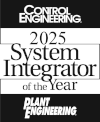Challenge
The era of the PLC5 has come to an end. The controller that once served companies well for many years is now obsolete, resulting in costly aftermarket replacement parts, limited capabilities, and downtime challenges. For one of the world’s largest mozzarella cheese producers, the key challenge with their legacy Allen Bradley PLC5 control system centered around its limited memory capacity and, consequently, the inability to handle new data collection and documentation requirements by U.S. Department of Agriculture (USDA). The cheese producer was further challenged to find a system integrator that had technical expertise with the obsolete architecture to leverage their existing automation investment and determine their migration options. Specialized in this matter, E Tech Group was engaged to plan and manage the migration to the ControlLogix platform.
Solution
The customer’s Allen Bradley PLC5 control system used legacy communication protocols such as Remote I/O and DeviceNet. These networks were converted to ethernet communication with the use of aftermarket gateways and media converters. However, these short-term fixes to remain functional were not well-documented making the decision to reuse existing PLC5 I/O modules with “local” Remote I/O & DeviceNet gateways a difficult issue to troubleshoot while setting up their communication.
The E Tech Group team implemented their success-proven phased approach for a timely migration. The team identified modern Rockwell processors with ample memory to support the new process documentation requirements in addition to the best location to physically install the new PLC in the customer’s existing control panels. Furthermore, E Tech Group assigned a project team of engineers with strong PLC5 conversion experience to properly migrate to the new architecture and leverage the ControlLogix’s functionality.
Results
The preservation of archaic automation systems can be risky and expensive. With consideration to downtime costs and other performance challenges, the investment to migrate to a modern system may pay off sooner rather than later. “The migration provided our customer a solid basis to build for the future.” said Aaron Peri, E Tech Group Project Manager. “It gives them the opportunity to take advantage of newer technologies as they continue to become available and enables them to meet the new, more stringent reporting requirements imposed by the USDA.”
Ultimately, E Tech Group deployed a successful migration strategy that equipped the company to better meet regulatory demands. Although a migration process can seem daunting, it doesn’t have to be with the right system integrator partner.
Challenge
Wine consumption in the United States has increased annually over the past ten years. In 2020, the United States alone consumed one billion gallons of wine.[1] The increased demand for wine has amplified the need for technologies to manage wastewater treatments during the winemaking process. Supervisory control and data acquisition (SCADA) systems play an important role in this process by monitoring and analyzing real-time data to address system problems and keep operations running smoothly. When one of the world’s largest wineries needed to address data collection and operational issues at their wastewater facility, E Tech Group was engaged to make their process more sustainable from their existing infrastructure.
Solution
The wastewater process required a large quantity of process data to be routinely sampled and the size of the facility, coupled with the number of sampling tasks, often took operators away from the control screens. This reduced their ability to access up-to-date, manageable information on potential operational problems. E Tech Group’s Senior Controls Engineers determined that the success of this project would rely on centralizing the existing equipment, upgrading to a new SCADA system, and planning for future growth.
The E Tech Group team upgraded the winery’s SCADA system with the ability to notify operators of different priorities of alarms by leveraging their existing FactoryTalk View SE Distributed application. WIN911 software that delivers critical alarms and alerts in real-time was connected to the facility’s FactoryTalk Alarm & Events to notify operators of potential operation issues without requiring duplicated databases. Once installed, an operator could effortlessly receive push alarm notifications through an app on their mobile phone. This allowed the operators to complete routine tasks throughout the facility without the worry of missing critical alarms while away from the control screens.
Results
“Had the facility not been equipped with a SCADA system that was capable of this type of expansion, the controls strategies that now exist would not have been possible and may not have allowed the engineering team to address the process issues” explains a Technical Manager at E Tech Group. This amplifies the importance of long-term infrastructure planning and choosing the right system that can grow with a facility. With a SCADA system investment, the opportunities to control efficiency and mitigate downtime can foster a significant advantage over other manufacturing and processing competitors.
1] Wine Institute. (2022) US Wine Consumption. Wine Statistics. https://wineinstitute.org/our-industry/statistics/us-wine-consumption/
Challenge
Olive oil is a multibillion-dollar market. With a projected compound annual growth rate of 6.10% by 2028, producers must find ways to keep up or get left behind.[1] Challenges in the packaging process can impact the ability to scale operations and can affect many aspects of a company’s product line such as quality, safety, product professionalism, and maintenance costs. Deploying automation solutions can help with these challenges and better streamline operations. When one of the top 4 olive oil companies in California recognized the costly operational challenges of their manual packaging process, automation was key to help them remain competitive.
Solution
The olive oil company needed to modernize and expand their packaging process, with preservation of product quality and integrity as a top priority. The customer wanted a state-of-the-art, aseptic system that would integrate well with their other existing processing lines. Certified in Ignition, an industrial application platform from Inductive Automation, and having an extensive work history at the location, E Tech Group’s Technology Solutions Manager (TSM) came up with an innovative plan for the project’s success.
E Tech Group provided design schematics, built the control panels, developed the PLC, HMI, and SCADA programs, and commissioned a new Bag-in-Box line. The controls system included several communication layers managed by a single line control AB ControlLogix gateway. The Process Level (Level 0) was composed of AB PowerFlex 525 VFDs and IFM IO-Link master blocks on an EtherNet/IP DLR network. On the Basic Control Level (Level 1), the line control ControlLogix gateway communicated with all the PLCs from the OEM equipment. Leveraging the existing Ignition SCADA system, E Tech Group developed a special project for the packaging line and installed two industrial computer clients for local monitoring and control.
Results
Using Control System Integrators Association (CSIA) methodology and best practices, our TSM coordinated with the client and the various OEM’s, keeping everything on schedule. E Tech Group has been a certified member of CSIA since 2012, which is a mark of excellence that demonstrates technical proficiency across ten key business management areas and commitment to executing the best methodology. Finally, with the ability to test and run the new system alongside the old, the olive oil company experienced no downtime or loss of production during the transition which resulted in a successful modernization of their packaging process.
[1] Geographic Scope and Forecast. (2021, August). Olive Oil Market Size and Forecast. Verified Market Research. https://www.verifiedmarketresearch.com/product/olive-oil-market/
Challenge
After producing some of the world’s most famous and flavorful confections for many years, a Northern California candy manufacturer’s aging conveyor system was becoming old, noisy, and obsolete. The existing conveyor system, which had sorted and moved large volumes of product for over a decade, was a line shaft design and was beginning to degrade. The factory was in desperate need of a conveyor system modernization which would increase efficiency, decrease noise and minimize maintenance costs.
Solution
For this project, E Tech Group (AG) used Ignition industrial application software from Inductive Automation and an Allen Bradley controller. The technology for the new conveyor was DC roller controlled. DC rollers are quieter, more energy efficient, and can be controlled more precisely with the set-up of multiple zones per conveyor. This technology allows for a variety of new features to enhance overall operations and reduce wear and tear. As an example, multiple rollers can be started and stopped in sections, and can also start and stop on demand. This enables a more efficient workflow based on capacity and need.
The addition of Ignition Software provided increased visibility to the plant floor, as well as the ability to pull more data via the new Itoh Denki controller. It also enabled AG to create templates for the DC roller controllers which included running data, alarming data and controls.
The upgrade and modernization of the candy manufacturer’s old, outdated conveyor system helped improve overall operational efficiency and enhance the automation processes. AG was able to eliminate the manufacturer’s noisy, worn-out system and modernize their entire conveyor operation with added features that created a quieter operation, extended life, and reduced wear and tear
Quieter Conveyor
Upon installation of the new system, the candy manufacturer noticed an immediate reduction in noise during the operation of the conveyor system.
More Efficiency
With a 24V DC motor nestled inside each roller’s tube, the conveyor system achieved better accumulation (a higher run rate). They also had tighter control of product placement which increased overall efficiencies.
Reduced Maintenance
The old conveyors were always running and had a lot of moving parts that would get worn out and require servicing or replacement. Since the modernization project has been completed, the manufacturer has seen a significant decrease in all service and maintenance costs.

